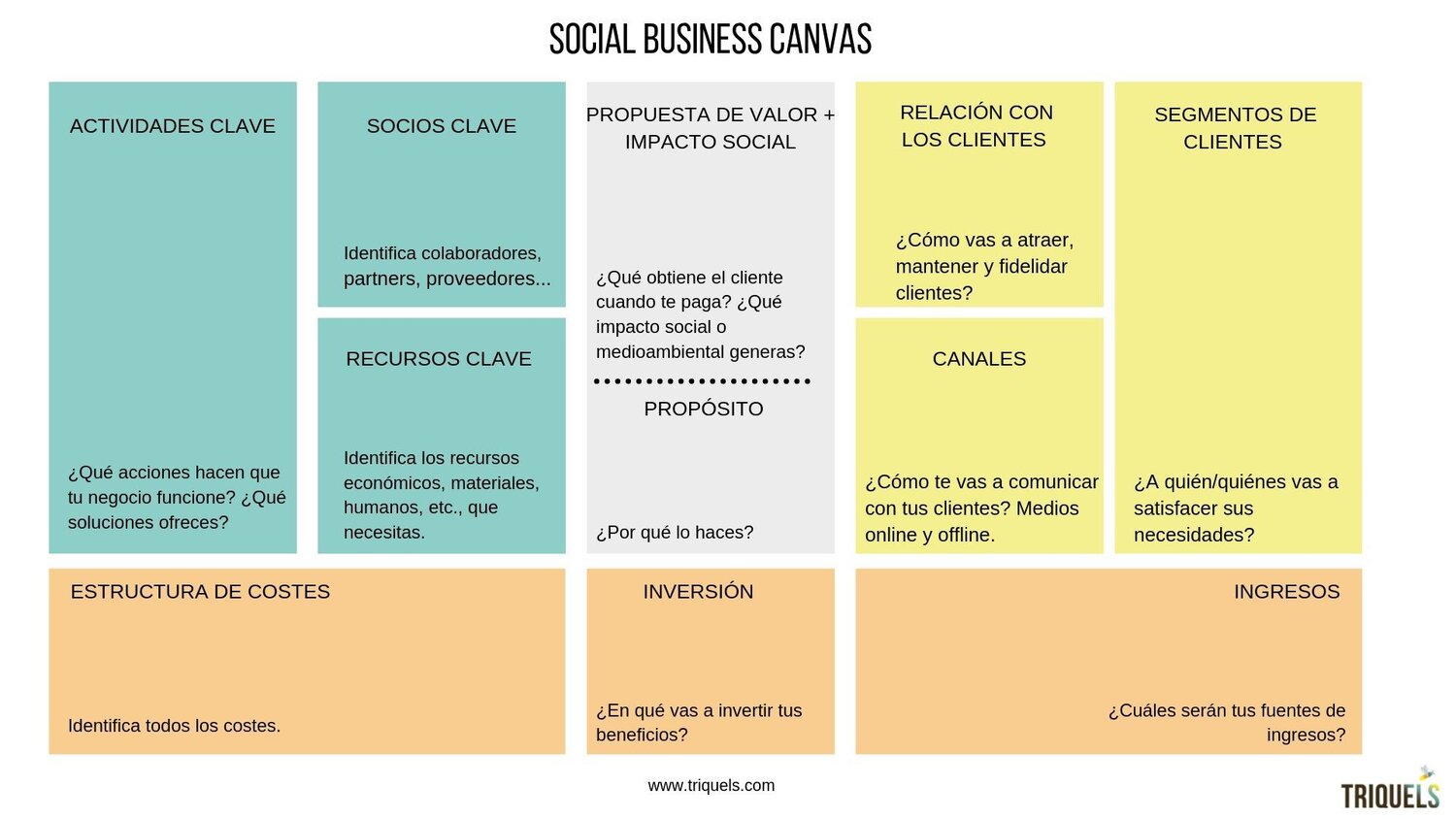Building our own social impact project 07
What does our project have to be like in order for it to have an impact and be socially transformative?
We probably have some clues and some uncertainties. We propose as a tool to work on our value proposition a model called Social Canvas, inspired by the Business Model Canvas (Business Canvas model) but which incorporates key elements that make up our project from the most social aspect.
In this blog ( https://www.triquels.com/blog/canvas-social ) they develop in detail the process to create your social canvas, and then we will take a tour of the main aspects that make it up.

So to make the canvas for your social project using this template you can follow these steps:
What are you going to do?
1. Value proposition : define why your customers should choose you and not your competition and think about what problem you solve.
2. *Social impact: define what positive impact you generate on society and the environment.
3. *Your purpose : think about what you are looking to achieve with your project and why you are doing it.
Who are you addressing?
4. Customer Segments – Define who will benefit from hiring you or buying your products. Are the same people who pay for it and enjoy it? Or are they different people? Do you have several types of clients?
5. Relationship with customers : it costs much more to attract new customers than to retain those who have already bought or hired you, so you must think about how you are going to build relationships with your customers to attract, keep, and retain them.
6. Channels: define all the channels that you are going to use to communicate with your customers. This block is closely related to the previous one because they will be the means you use to interact with your customers. Consider online and offline media.
How are you going to do it?
7. Key partners : define the alliances that you will need to develop your social enterprise (suppliers, collaborators, employees…)
8. Key resources: define the resources that you will need for your project to succeed. Take into account economic, human, material, technology, infrastructure resources…
9. Key activities: define the activities that will make your business work (production, buying and selling, consulting…).
How many?
10. Income : define what all your sources of income will be.
11. Cost structure : define all the costs you will have (fixed and variable).
12. *Investment : define what you are going to invest your profits in, it can be reinvestment in the company, training, a part to NGOs… Remember that sustainability also contemplates long-term profitability.
